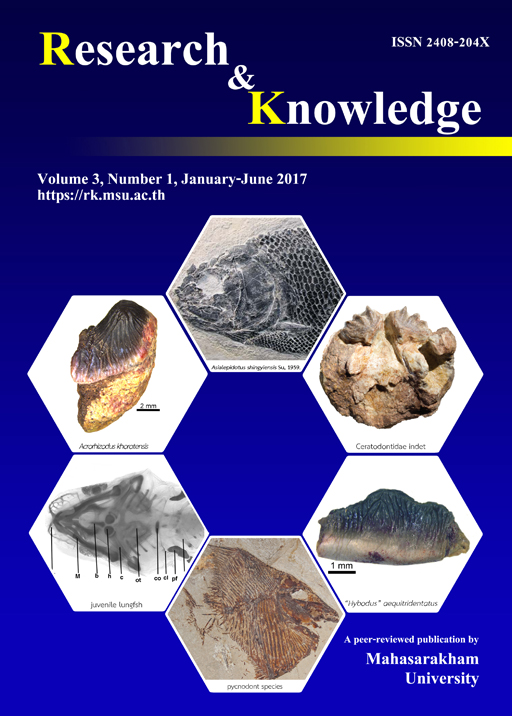Living animals for comparison in studies of Mesozoic fossils
Keywords:
Continuity of lungfish morphology, occipital rib, suctorial feeding, respirationAbstract
Lungfish are timeless, starting in the Devonian and still found today. Unfortunately this does not mean that biologists and palaeontologists agree about the functional anatomies of dipnoans. Most lungfish that are sufficiently well preserved have an enlarged rib behind the head, known as the occipital or cranial rib. Biologists describe this rib in living lungfish as an aid to the suctorial activities of the fish, involving feeding, burrowing in the mud or drawing a current of air or water into the oral cavity, activities important to both groups of extant lungfish. The arrangement of the occipital rib in lungfish differs in neoceratodonts and lepidosirenids, because the morphology of the oral cavity and the throat differs in the two groups. Suctorial activities are important in most if not all lungfish, for feeding, breathing in air or water, or digging a hole in the substrate. However, presence of an occipital rib does not mean that the fish would have been an air breather.
References
Bemis, W. E. 1987. Feeding systems of living Dipnoi; Anatomy and Function. Journal of Morphology (Suppl 1), 249-275.
Clement, A. M., Long, J. A., Tafforeau, P. and Ahlberg, P. E. 2016. The dipnoan buccal pump reconstructed in 3D and implications for air breathing in Devonian lungfishes. Paleobiology 42, 289-304.
Greenwood, P. H. 1987. The natural history of African lungfishes. Journal of Morphology (Suppl1), 163- 179.
Kelly W. L and Bryden M., 1983. A modified differential stain for cartilage and bone in whole mount preparations of mammalian foetuses and small vertebrates. Stain Technology 58, 131-134.
Kemp, A. 2012. The World of Lungfish. Andrachne Press, Brisbane. pp. 307.
Kemp, A. Cavin, L. and Guinot, G. 2017. Evolutionary history of lungfishes with a new phylogeny of postDevonian genera. Palaeogeography, Palaeoclimatology, Palaeoecology 471, 209-219.
Schultze, H. -P. and Chorn, J. 1997. The Permo-Carboniferous genus Sagenodus and the beginning of modern lungfish. Contributions to Zoology 67, 9-70.
Teller, E. J. 1891. Uber den Schadel eines fossilen Dipnoers Ceratodus sturii nov. sp. aus den Schichten der oberen Trias der Nordalpen. Abhandlungen der Kaiserlich Koniglichen Geologischen Reichsanstalt 15, 1-38.
Downloads
Published
How to Cite
Issue
Section
License

This work is licensed under a Creative Commons Attribution-NoDerivatives 4.0 International License.








